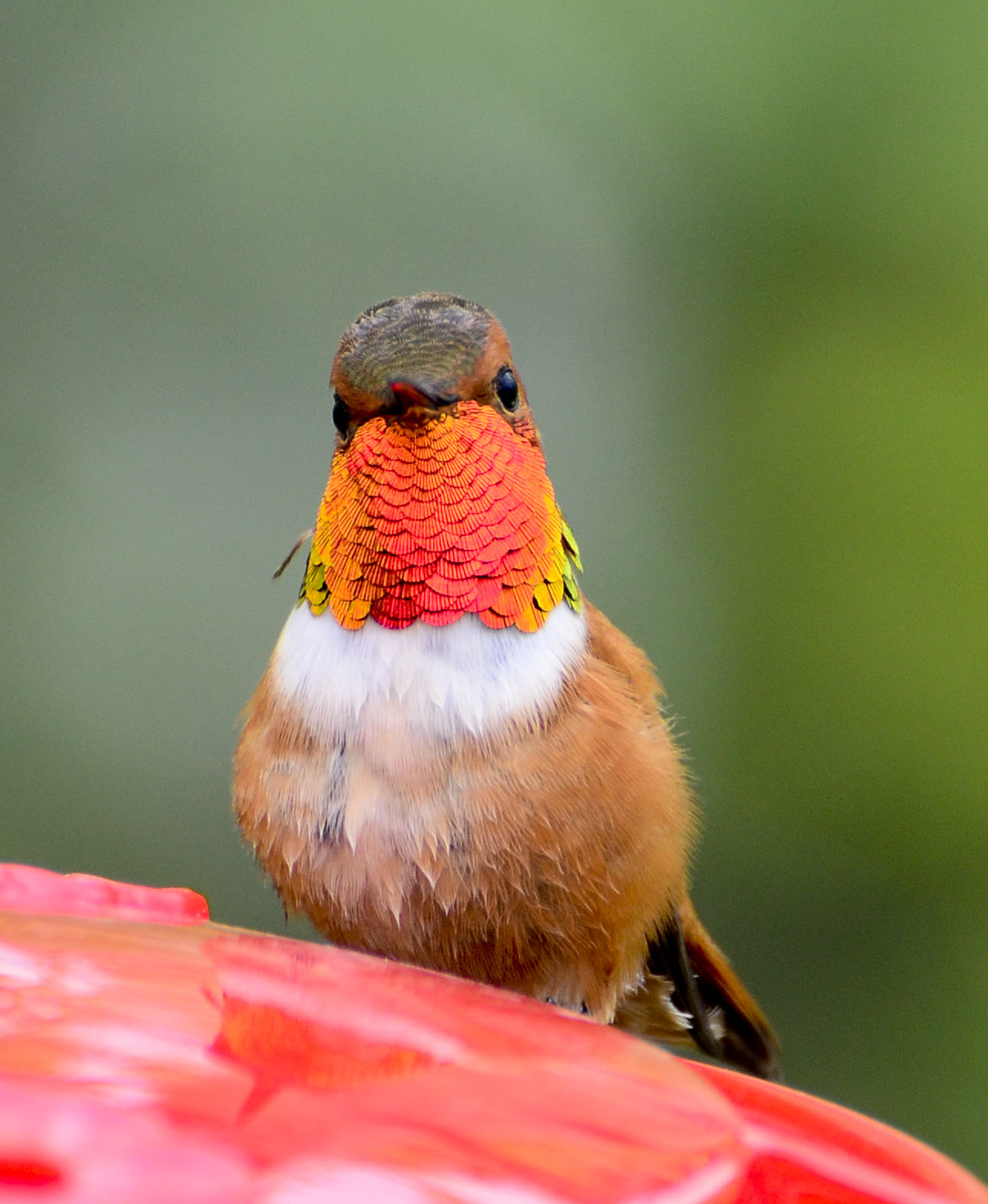Posted by Matthew Sim
This past Thursday, I went out for a walk in the Weaselhead with local nature expert Gus Yaki and a group of other birders. Our target species were the 2 species of hummingbird that call this park home; the Calliope Hummingbird and the Rufous Hummingbird. Though we saw and heard many great species on our walk, for this post I will concentrate on the hummingbirds.
When we reached the area where Calliope Hummingbirds are usually seen, we scanned around with our binoculars, searching for this tiny bird. The smallest bird in North America at 8cm in length (3.25 inches), this hummingbird can sometimes be passed off as a large bee. After several minutes, somebody found this beautiful male perched at the top of a spruce tree.
We observed this little guy (the Calliope is the smallest long-distance avian migrant in the world) as Gus told us many neat facts about the species. For example, the pink streaks on the male’s throat form a V-shaped gorget, and these streaks are rather long, so that when the male turns his head, the streaks will actually reach back over his shoulder. This was my first time seeing the species so I was particularly enthralled with the bird. After some time, we moved on, back closer to the river in search of the Rufous Hummingbird.
We had to walk through some muddy spots to get to the habitat where the male Rufous is likely to be seen but was it ever worth it! When we got there, someone soon spotted the male Rufous and we soon all had our binoculars trained on him as he displayed his gorgeous orange-red gorget.
The Rufous Hummingbird was moving around a lot and we got to see him at various spots; perched and in flight.

At one point, he even came to the bushes right behind us and started feeding. Gus told us that these bushes were actually Siberian Peashrub, more commonly known as Caragana. They are an invasive species that totally dominates the environment, so that no other flowering plants live in the area ( it covers 10-12 acres on the north side of the Elbow river). Male Rufous Hummingbirds feed on these plants because of the abundant if only temporarily nectar, however the females, which raise their families alone without the help of the males, realise that there is not enough nectar to raise a family on and head elsewhere, to richer, more natural environments. The males are then at a biological dead-end and do not have the oppurtunity to pass on their genes. This was quite fascinating and I would not have learned this had I not been on the trip with Gus. Thanks Gus!
He showed off his colors beautifully, revealing how he got his name.

We had a great morning watching these hummingbirds and learning lots about them thanks to Gus’ vast wealth of knowledge.







































































